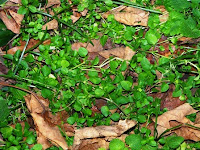Design a sensory garden for your health and well-being. A sensory garden is a natural way to relieve stress and anxiety.
A few years ago my husband and I designed and installed a sensory garden. Our garden is 22 x 34 which means that the size does not matter as long as you have room for all of the sensory stimulates; sight, touch hearing, scent, and taste.
I had most of the material needed for the sensory garden; however, I did need to pull the garden together in order to make it flow nicely in the section of my yard. I selected an area in my yard that was located on the side of the wood and designed a garden that featured sections. These sections were connected to each other with a pea gravel path.
In one section I planted a culinary herb garden, in the other section I grew fragrant roses. In the center of my sensory garden, I added a medium-sized solar birdbath and planted Echinacea coneflowers and Black-eyed Susan. These flowers attracted hummingbirds and butterflies to our yard and garden.
Below view photographs of my sensory garden.
In the back of my garden, in a focal area, I planted a small ornamental grass garden, and next to the grass garden was a small fountain. This fountain is where the wildlife comes to drink. The outdoor seating area was limited so wood benches were set along the path.
To add to the ambiance of the sensory garden I added garden accessories: wind chimes , solar lighting
, solar lighting , bird feeders, and garden statues of fairies, frogs, and cats.
, bird feeders, and garden statues of fairies, frogs, and cats.
Designing the sensory garden was an enjoyable garden project. My husband helped me with the installation of a garden pond
We worked together as a team and now we are proud of our accomplishments. The sensory garden healed us of our daily stress and helped us to focus on our priorities.
If you work in a high-stress environment or if you suffer from anxiety then you should design a sensory garden as it will help you to achieve inner peace.
















